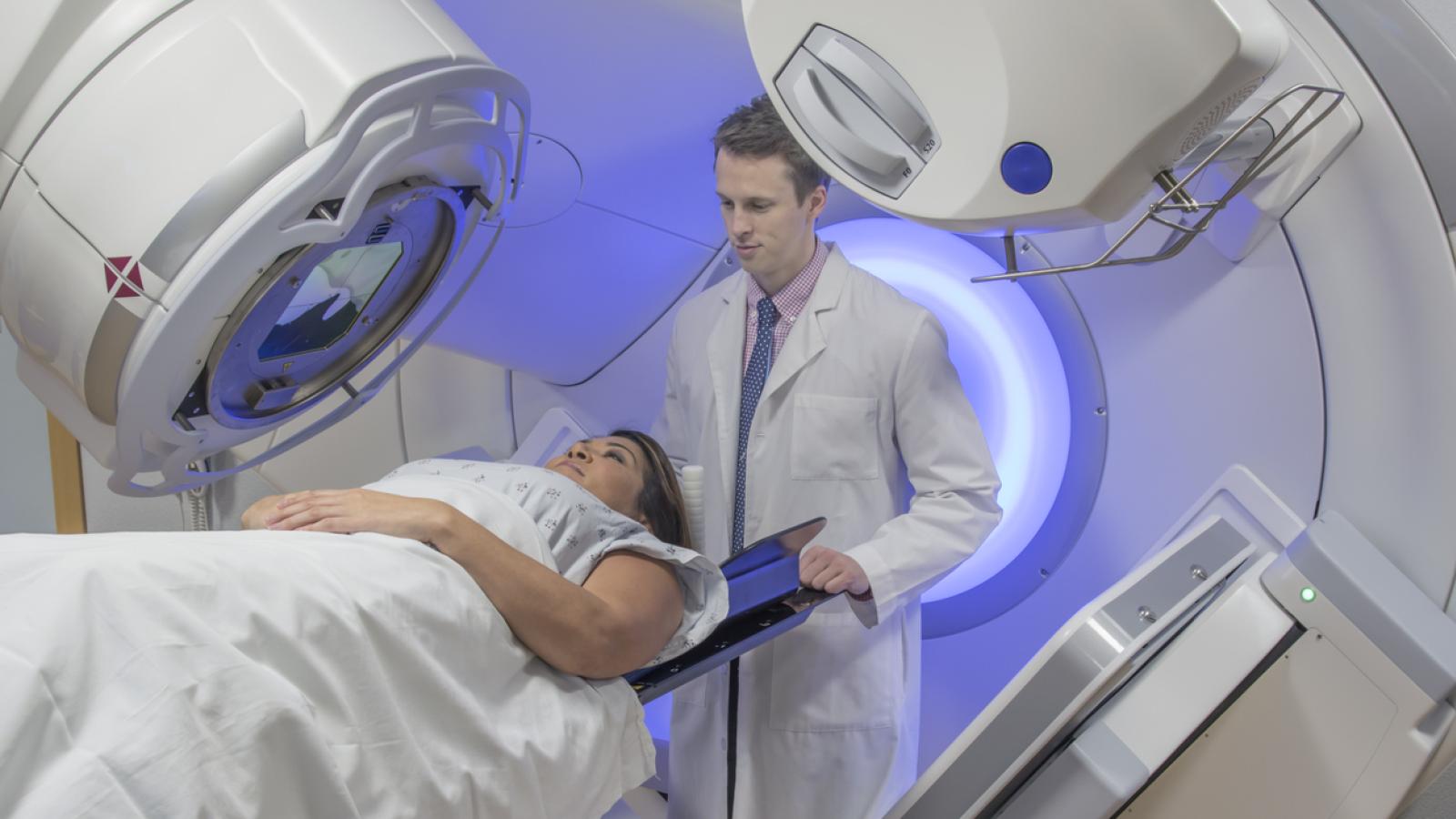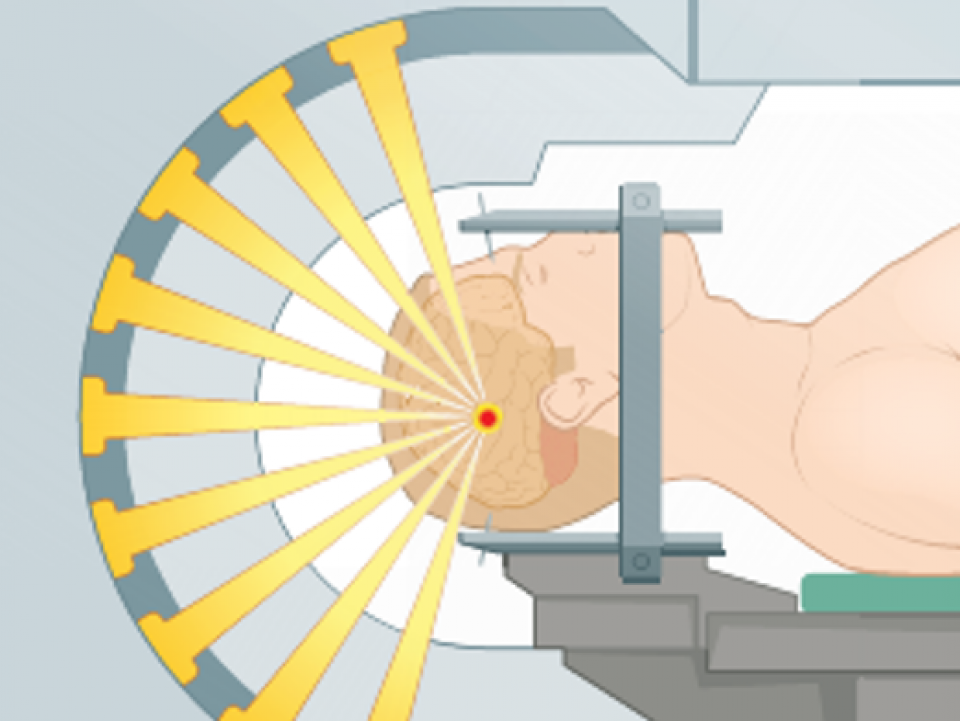Stereotactic radiotherapy and stereotactic radiosurgery for brain tumours

On this page:

Stereotactic radiotherapy and stereotactic radiosurgery are very precise types of radiotherapy.
Planning stereotactic radiotherapy and stereotactic radiosurgery
Because the area to be treated is smaller than with standard radiotherapy, it is very important that your head is still and in the same place during treatment. So you will need to wear a head frame or mask.
If you have a head frame it will be made to fit your head exactly, using information from scans. The head frame is attached to your skull using pins. Read more about masks and headframes.
Stereotactic radiotherapy
With stereotactic radiotherapy the radiotherapy beams are aimed at the tumour from many different directions around your head. Only a very small area is targeted with a high dose of radiotherapy. Because it is very precise, this treatment is less likely to affect healthy brain tissue near the tumour.
Stereotactic radiotherapy treatment is usually divided into between 3 and 30 daily doses called fractions.
Side-effects
Stereotactic radiotherapy treatment has fewer side effects than the usual type of radiotherapy, mainly because the area being treated is smaller. But you may feel tired for a while afterwards.
Stereotactic radiosurgery
Radiosurgery is not actually surgery. It is a type of stereotactic radiotherapy that uses more radiation beams and gives a higher dose. Usually 1-5 sessions of very high dose stereotactic radiosurgery are required. Stereotactic radiosurgery treatment can take from 30 minutes up to a few hours.
There are different treatment machines that can deliver stereotactic radiosurgery. Linear accelerator, gamma-knife and cyberknife machines can all deliver this type of radiotherapy.
For more information
Phone
1800 200 700



